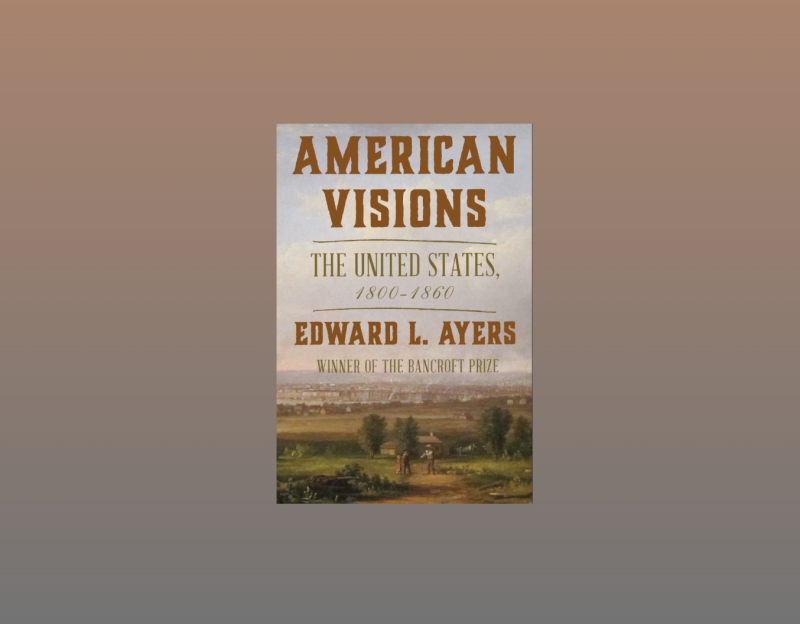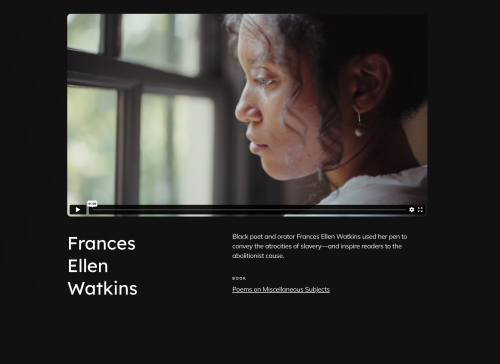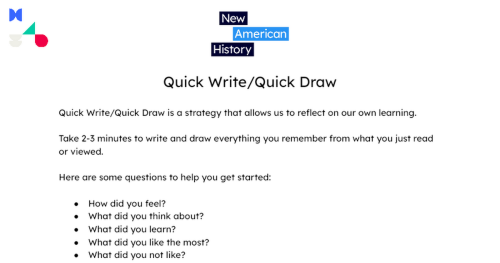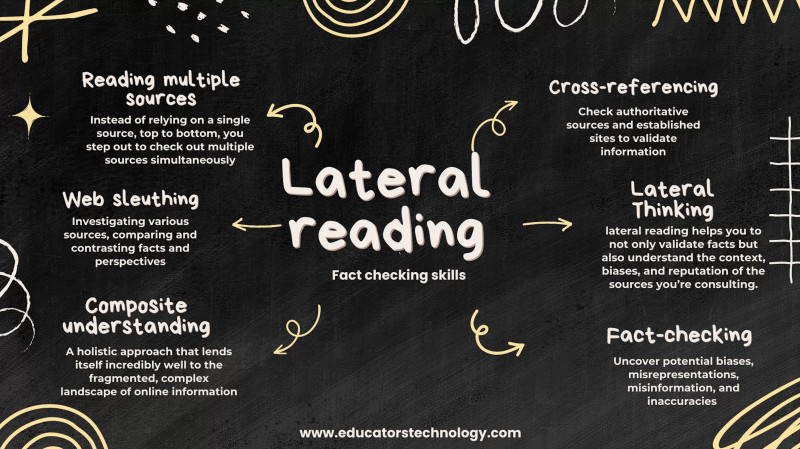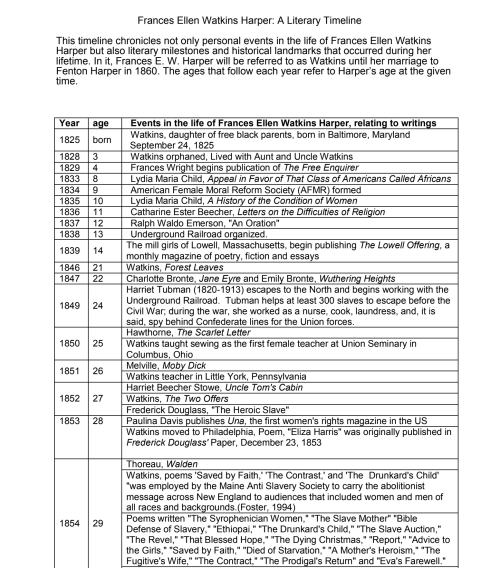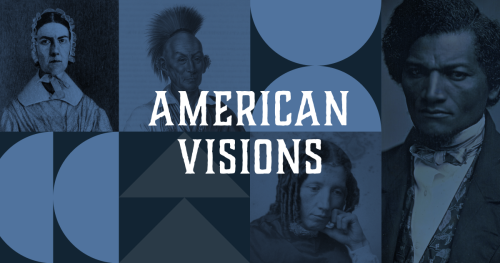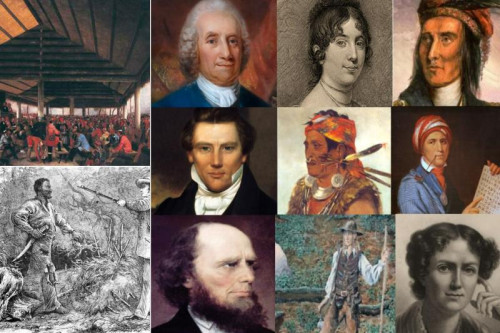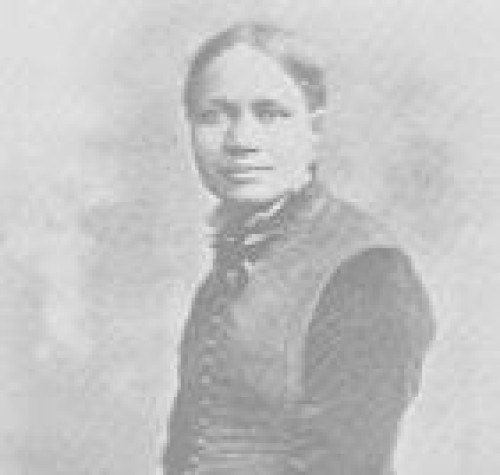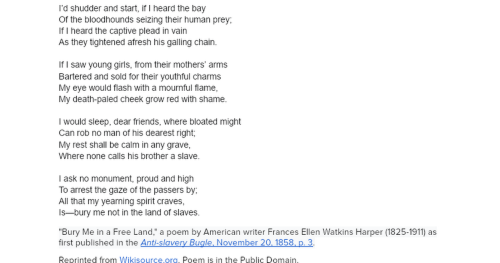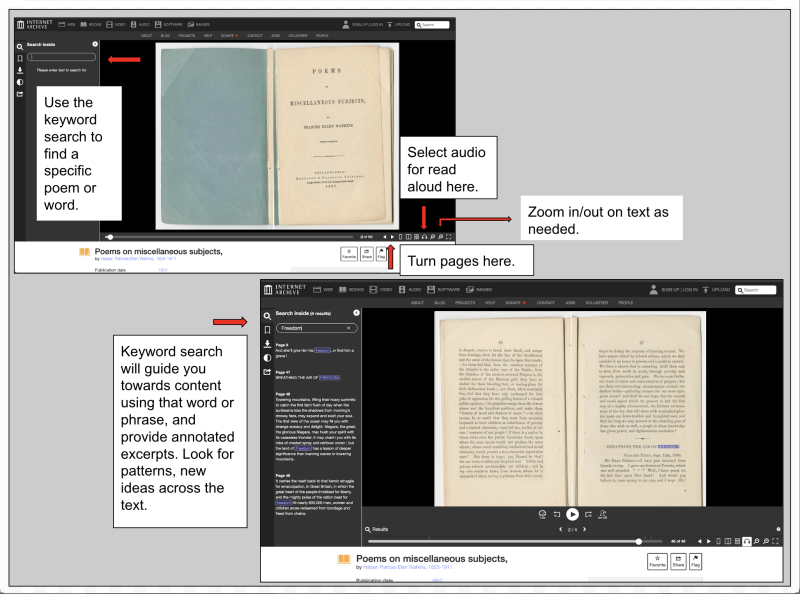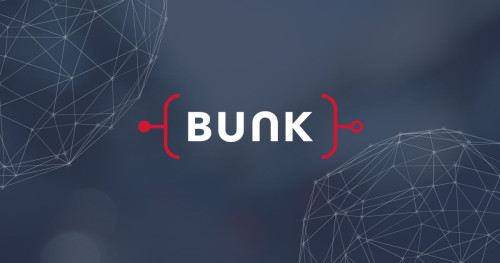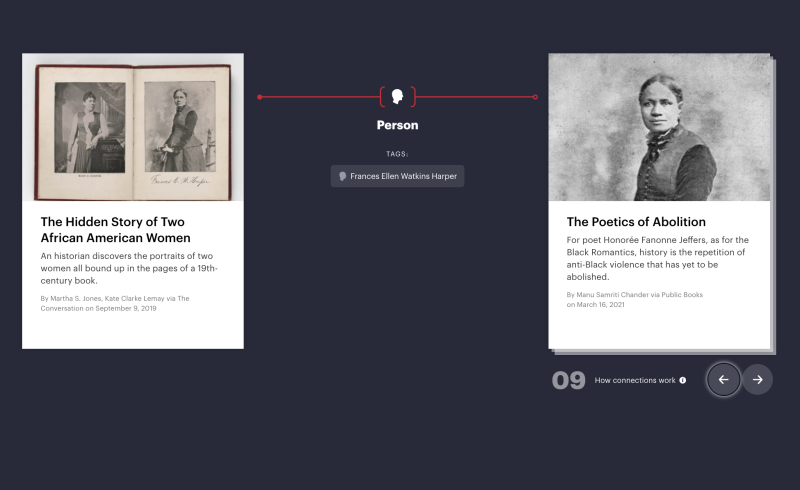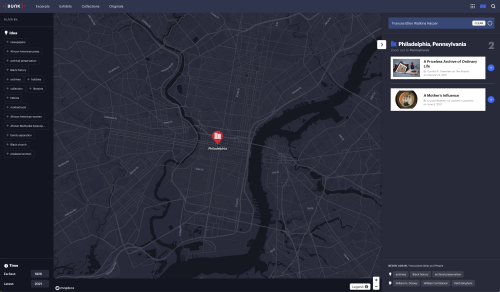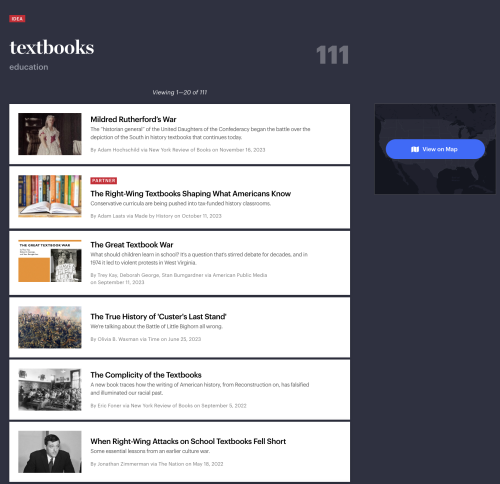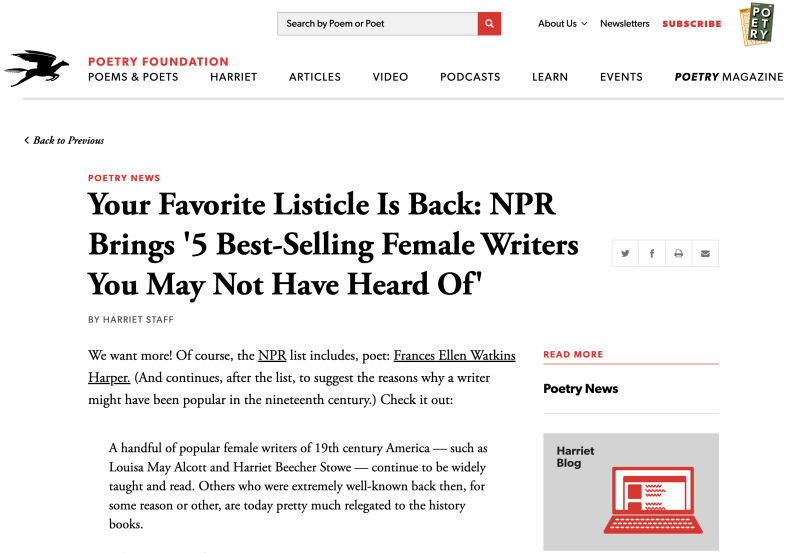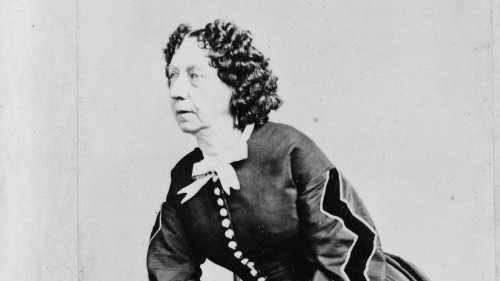This work by New American History is licensed under a Attribution-NonCommercial-ShareAlike 4.0 (CC BY-NC-SA 4.0) International License. Permissions beyond the scope of this license may be available at newamericanhistory.org.
Bury Me in a Free Land
View Student Version
Standards
Common Core:
CCSS.ELA-LITERACY.RH.9-10.6 Compare the point of view of two or more authors for how they treat the same or similar topics, including which details they include and emphasize in their respective accounts.
CCSS.ELA-LITERACY.RH.11-12.7 Cite specific textual evidence to support analysis of primary and secondary sources, connecting insights gained from specific details to an understanding of the text as a whole.
CCSS.ELA-LITERACY.RH.11-12.7 Integrate and evaluate multiple sources of information presented in diverse formats and media (e.g., visually, quantitatively, as well as in words) in order to address a question or solve a problem.
CCSS.ELA-LITERACY.RH.6-8.6 Identify aspects of a text that reveal an author’s point of view or purpose.
CCSS.ELA-LITERACY.RH.6-8.7 Integrate visual information (e.g., in charts, graphs, photographs, videos, or maps) with other information in print and digital texts.
C3 Framework:
D2.His.3.9-12. Use questions generated about individuals and groups to assess how the significance of their actions changes over time and is shaped by the historical context.
D2.His.3.6-8. Use questions generated about individuals and groups to analyze why they, and the developments they shaped, are seen as historically significant.
D2.His.4.6-8. Analyze multiple factors that influenced the perspectives of people during different historical eras.
D2.His.4.9-12. Analyze complex and interacting factors that influenced the perspectives of people during different historical eras.
National Council for Social Studies:
Theme: Time, Continuity, ChangeTheme: Culture
National Geography Standards:
Standard 4. The physical and human characteristics of places.
Standard 6. How culture and experience influence people’s perceptions of places and regions.
AP United States History:
College Board AP U.S. History (Fall 2020)
HISTORICAL THINKING SKILLS: SKILL 4.A – Identify and describe a historical context for a specific historical process or development.
SKILL 5.A: Identify patterns or connections between historical developments.
EAD Framework:
DESIGN CHALLENGE:
Civic Honesty, Reflective Patriotism
THEME:
Institution and Social Transformation(CSGQ5.3F) How can we learn to have productive discussions about controversial issues that have existential stakes for some participants?
(HDQ5.3A) How have the different legal statuses of different sections of the American population affected the development of the United States over time?
Teacher Tip: Think about what students should be able to KNOW, UNDERSTAND and DO at the conclusion of this learning experience. A brief exit pass or other formative assessment may be used to assess student understandings. Setting specific learning targets for the appropriate grade level and content area will increase student success.
Suggested Grade Levels: 6-8, 9-12
Suggested timeframe: Three 45-minute class periods or two 90-minute class periods
Suggested Materials: Internet access via laptop, tablet or mobile device
Key Vocabulary
Abolitionist - a person who advocated or supported ending the institution of slavery in the U.S (before and during the American Civil War)
Anthology - a collection of artistic works that have a similar form or subject, including poems, music, or short stories
Atrocity - an extremely wicked or cruel act, involving physical violence or injury
Coffle - a group of enslaved people chained together and marched together from one place to another
Digital humanities - an academic field applying computational tools and methods to learn traditional humanities disciplines such as literature, history, and philosophy
Evoke - to cause something to be remembered or expressed, to bring a memory into vivid recollection
Historical context - the setting in which a historical event, idea, or object takes place. In writing, historical context includes the social, economic, cultural, and political influences that shape your primary sources. Historical context helps you understand your topic fully.
Historical empathy - historical inquiry in which academic and emotional responses to historical content are shaped through source analysis of the actions, motives, perspectives, and beliefs of people in the past that relate to one’s prior knowledge and life experiences
Lateral Reading - a digital literacy strategy that involves searching for information about a source while you are reading it; evaluating the historical context and credibility of a source by comparing it with other sources in real-time (this strategy involves multiple tabs open on your device as you read across a variety of sources!)
LIsticle - a piece of writing or other content presented wholly or partly in the form of a list.
Progressive Era - a period of US history from the 1890s to the 1920s focused on using the federal government to eliminate unethical and unfair business practices, reduce corruption, counteract the negative social effects of industrialization, and create more protections for workers and consumers
Prose - the ordinary language people use in speaking or writing, rather than poetry
Shambles - a place that is disorganized or a mess, in earlier history a place of mass slaughter or bloodshed, including animals sent to a slaughterhouse
Suffrage - the right to vote in political elections
Suffragist - a person fighting for the right to vote
Temperance movement - (also called the Prohibition Movement) was a Progressive Era political and social movement in the United States whose goal was to end the sale and consumption of alcohol across the United States. In 1919, the 18th Amendment to the United States Constitution officially made the United States an alcohol-free nation, though it would ultimately be repealed in 1933.
Vertical Reading - when a reader looks at only one source to gather information. The reader relies solely on the source itself to determine the reliability or validity of the information. (Note: it is recommended that you read vertically after using lateral reading to better determine the best sources to support your learning.)
Read for Understanding
Teacher Tips:
New American History Learning Resources may be adapted to a variety of educational settings, including remote learning environments, face-to-face instruction, and blended learning.
If you are teaching remotely, consider using videoconferencing to provide opportunities for students to work in partners or small groups. Digital tools such as Google Docs or Slides may also be used for collaboration. Rewordify helps make a complex text more accessible for those reading at a lower Lexile level while still providing a greater depth of knowledge.
These Learning Resources adaptation of the QuickWrite strategy known as QuickWrite/QuickDraw to respond to a powerful piece of text. A template adapted from Read/Write/Think is provided, or you may choose to use a blank sheet of paper or ruled notebook paper. The I Used to Think, But Now I Think… thinking routine from Harvard’s Project Zero is introduced, including an optional graphic organizer for students to organize their thoughts.
Lateral reading strategies are introduced in this learning resource using a video created by the University of Louisville Library. Many useful links for educators are found in the annotated citations of this helpful article from Educators Technology. Visual notetaking, including Sketchnotes and Sketchquotes, is also introduced for students to annotate a text or quotation. Students will design their own Listicle using an exemplar from National Public Radio.
Analyzing poetry is employed to help students build historical empathy. This episode of the Let’s K12 Together podcast featuring Dr. Kathryn Perrota may be helpful as you prepare to teach this lesson.
Students will use the Internet Archive to access primary sources found in the Original Sources provided by the American Visions companion site. Additional resources including a StoryMap are used to provide access to both primary and secondary sources.
These Learning Resources follow a variation of the 5Es instructional model, and each section may be taught as a separate learning experience, or as part of a sequence of learning experiences. We provide each of our Learning Resources in multiple formats, including web-based and as an editable Google Doc for educators to teach and adapt selected learning experiences as they best suit the needs of your students and local curriculum. You may also wish to embed or remix them into a playlist for students working remotely or independently.
Read for Understanding (for students)
Black poet and orator Frances Ellen Watkins (Harper) used her pen to convey the atrocities of slavery—and inspire readers to the abolitionist cause. In this learning resource, you will explore these themes through her poem, Bury Me in a Free Land.
Engage:
In what ways might a short film or other visual interpretation help us understand the past?
In the mid-19th century, a young Black woman, Frances Ellen Watkins, spoke across the North to raise money for the Underground Railroad. She evoked sympathies for the slave in ways that men could not, in ways white people could not, and in ways prose could not. Her poem, “Bury Me in a Free Land,” spoke with the voice of a woman begging not to be buried where slavery ruled.
View this video interpretation of one of Watkins’ most powerful poems:
Take a few minutes to describe your thoughts about the video in a QuickWrite/QuickDraw. If time permits, you may choose to share your response with a partner or as part of a whole class discussion, as directed by your teacher. You may use the vocabulary resources provided above to assist you with your writing.
Your teacher may ask you to record your answers on an exit ticket.
Explore:
How might we use lateral reading to learn from a variety of primary and secondary sources?
Often when we are reading on a digital device or platform, we tend to scroll through a single trusted source to gain new information. This is known as vertical reading. On the other hand, lateral reading is a digital literacy strategy that involves searching for information about a source while you are reading it and evaluating the historical context and credibility of a source by comparing it with other sources in real time. This strategy involves having multiple tabs open on your device as you read across a variety of sources.
View this video from the University of Louisville Library to learn more about lateral reading.
This Sketchnote, or visual notetaking strategy, may also help you understand how to best use lateral reading when analyzing digital resources.
Frances Ellen Watkins (later married and known as Frances Ellen Watkins Harper) was born to free Black parents in Baltimore County, Maryland. Orphaned at a young age, she was raised by an aunt and uncle and later worked as a seamstress and then educator, taking up the abolitionist cause as well as a suffragist and advocate of the temperance movement.
Bury Me in a Free Land was first published in 1858 in the abolitionist newspaper, The Anti-Slavery Bugle. It was later republished in 1864, in Wiliam Lloyd Garrison’s abolitionist newspaper, The Liberator. Watkins Harper was influenced by the earlier strong voices of women writers including Catherine Beecher, and Lydia Maria Child.
Take a few minutes to view this timeline of her life and the other literary influences.
Next, compare some of these writers from her era using the list of Original Sources and digital StoryMaps from the American Visions companion site. Select three names from the timeline to cross reference (compare across lists) using resources linked in both the Original Sources list provided and the links found in the digital StoryMaps. Use the lateral reading strategy to compare each source, noting different ways each platform or site offers key information about each writer.
Turn and talk to a partner about the writers and sources you explored.
- What questions did using the lateral reading strategy help you resolve?
- What questions do you still have about one or more of the resources you explored?
- What digital resource that you explored are you most interested in taking a closer look at, also known as vertical reading?
Your teacher may ask you to record your answers on an exit ticket.
Explain:
Could reading poetry and examining other literary and artistic sources from the past help us develop historical empathy?
When we read a poem, watch a film, or listen to a piece of music, we often have an emotional reaction to the content. This is often the case when reading historical fiction vs. a textbook. It is important for us as readers of history to consider the author’s purpose, the historical time period and perspectives of the era, and the subject matter. It is not enough to try to “put yourself in someone else’s shoes,” or give them a “free pass” because of the times in which they lived, or the beliefs and policies of that historical era. It is important to examine the historical context under which a historic event occurred. This helps us better understand a topic from multiple perspectives as we form our own opinions in learning about the past.
You may wish to rewatch the video interpretation of Frances Ellen Watkins’ poem before analyzing the full text here.
Now listen to the audio content from the video while reading along with the full text, noting which verses are and are not included in the video. (Your teacher may provide a paper copy of the poem for you to annotate, or allow you to make a copy of this Google Doc.) Listen closely to note what is and is not included in the video version.
- Why might the filmmakers leave out whole sections of the poem in the video?
- What new insights might you gain from this additional content?
- What words or phrases most moved you or made you feel something as you read along?
- What reason or purpose do you imagine the poet had for choosing this subject for her poem?
- How might the poem have been used in her work as an educator, lecturer or abolitionist?
Using the American Visions Original Sources list, navigate to the Internet Archive entry for Frances Ellen Watkins. Take a few minutes to familiarize yourself with the tools. Locate the slider tool or double arrow keys near the bottom of the page to turn the pages. Zoom in/out on the text using the +/- magnifying glass icon. Use the audio feature to read the text aloud. Try a keyword search using the search box in the top left corner.
Explore two or more poems from Waktkins’ anthology as viewed on the Internet Archive.
- Do you see any similarities or differences between the other poems you explored, and Watkins’ Bury Me in a Free Land?
- What particular words or phrases helped you better understand the poet’s feelings or ideas about the abolitionist, suffrage, or temperance movements, or the institution of slavery?
- Did any other poem you explored mention people, events, or other new information that helps you understand the historical context during Watkins’ lifetime?
- What other feelings did you experience as you read more of Watkins’ poems or prose?
Using the I Used to Think, But Now I Think… thinking routine, note your reflections on exploring the works of Frances Ellen Watkins. Your teacher may provide this graphic organizer for you to organize your thoughts.
Your teacher may ask you to record your answers on an exit ticket.
Elaborate:
What connections can we make to the past using digital humanities tools and resources from the present?
You have been exploring the works of Frances Ellen Watkins using the Internet Archive, as well as powerful video interpretations and digital StoryMaps from American Visions. Turn and talk to a partner and discuss how using digital humanities tools and resources helps you better understand the content and historical context of literary works and historical writing.
- Which platform did you find most useful or engaging? (video, StoryMap, archives)
- What features or tools helped you better understand the poem or other content you explored?
- How are digital humanities tools and resources different from using print media such as a textbook or hard copy of a poem or document?
- What questions do you still have about any of the digital humanities tools or resources you explored?
- Where might you find answers to these questions?
Bunk is another powerful tool you can use to make historical connections. Take a few minutes to explore Bunk on your own. Think about the tools and features you liked best about the other digital humanities resources you explored earlier, and look for any common features in this new platform.
Explore the menu bar across the top of the Bunk site.
- What icons or features do you recognize from other digital platforms you have previously explored?
- What new features did you find that were of interest to you?
- What results might you find if you search for a name such as Frances Ellen Watkins, or a keyword search for abolition or suffrage?
- What happens when you select an excerpt based on your search?
- What types of connections do you see available from your search?
- How does this change as you select different types of Connections using the icons? (Hint: use the “How Bunk Works” link located along the bottom of the Bunk homepage.
- Go back to your keyword search and select the “View on Map” button. This takes you to the Bunk Places mapping platform. How does this expand or enhance your search?
- Locate the various tools and features on the map. Which of these look familiar to you based on your earlier explorations of sites including the StoryMaps or the Internet Archive?
- How is information arranged here spatially? How do the tags you explored earlier with the excerpts and connections work differently on the Bunk Places map?
Learning to use a variety of digital tools and resources, combined with learning strategies such as vertical or lateral reading, is an important part of your digital literacy toolkit. As a learner, you will need to practice and refine these skills to be a successful learner and citizen.
Share with a partner one interesting connection you made on Bunk today, either by using the “Share Connection” button or sharing a link from the Bunk Places you explored on the map.
Your teacher may ask you to record your answers on an exit ticket.
Extend:
Why are the contributions of so many historical figures overlooked when only a handful of others are studied as more prominent or exceptional?
In recent years, much has been written about what historical figures or specific events most American textbooks do and do not include, and whose stories are told vs. ignored or obscured.
In this learning resource, you have read about Frances Ellen Watkin (Harper), and other early 19th-century writers she was influenced by, or who were her contemporaries. In the past few years, more attention has been paid to trying to bring forth the voices of some lesser-known writers, thinkers, artists, inventors, and leaders. You may be less familiar with some of these names, or they may not be included in your school textbooks or state curriculum. Think back to the names on the timeline you explored earlier. Use Bunk to locate some of the names on the timeline. How many Bunk entries (if any) do you see for Ralph Waldo Emerson, Walt Whitman, or Henry David Thoreau? Compare these numbers to Frances Ellen Watkins Harper, Catherine Beecher, or Lydia Maria Child.
- What do you notice?
- What questions do you have about this data?
- Where might you find the answers to these questions?
National Public Radio (NPR) and other forms of media often use a Listicle to share interesting information or new content with their readers, viewers, listeners, or subscribers. Read this excerpt of a listicle from NPR featuring Frances Ellen Watkins Harper, and other female writers from the 19th century. Be sure to read the full excerpt by selecting Learn more at NPR.
Turn and talk to a partner about the listicle. Use the StoryMap from the American Visions site to locate some of the authors featured in the NPR listicle.
Select 3-5 other lesser-known writers, artists, thinkers, or leaders from the StoryMap and create your own Listicle of people you are most interested in learning more about. You may do this as a Sketchnote/Sketchquote, a Bunk Collection, a podcast, or create your own Bunk-like excerpt. Be sure to give your Listicle a catchy title to grab the reader, listener, or viewer’s attention.
We’d love to hear more about your listicle! Feel free to share them with us if your teacher or a trusted adult allows. You may email them to us at editor@newamericanhistory.org or share via social media as directed by your teacher.
Your teacher may ask you to record your answers on an exit ticket.
Citations:
“Anti-Slavery Bugle. [Volume] (New-Lisbon, Ohio) 1845-1861, November 20, 1858, Image 3.” https://chroniclingamerica.loc.gov/lccn/sn83035487/1858-11-20/ed-1/seq-3/, n.d.
“Bunk Connection.” Bunk, 2024. https://www.bunkhistory.org/resources/the-hidden-story-of-two-african-american-women/connections?type=person&res=3978.
Field Studio. “Frances Ellen Watkins.” American Visions, December 2023. https://visions.newamericanhistory.org/#frances-ellen-watkins.
“Frances Ellen Watkins Harper Timeline.” Frances Ellen Watkins Harper Timeline, 2009. https://www2.umbc.edu/che/tahlessons/pdf/Frances_Ellen_Watkins_Harper_19th_Century_African-American_Writer_and_Reformer_RS_02.pdf.
“Frances Ellen Watkins Harper: A Literary Timeline - Moonstone Arts Center.” Moonstone Arts Center, January 28, 2011. https://moonstoneartscenter.org/hiddenhistory/francesharper/frances-ellen-watkins-harper-a-literary-timeline/.
Harriet Staff. “Your Favorite Listicle Is Back: NPR Brings ’5...” Poetry Foundation, November 4, 2014. https://www.poetryfoundation.org/harriet-books/2015/11/your-favorite-listicle-is-back-npr-brings-5-best-selling-female-writers-you-may-not-have-heard-of.
Kharbach, Med. “Lateral Reading- a Must Have Skill for All Students.” Educators Technology, September 13, 2023. https://www.educatorstechnology.com/2023/09/what-is-lateral-reading.html.
Perrotta, Katie. “Historical Empathy, Making It Real for Kids with Dr. Katie Perrotta - Let’s K12 Better.” Buzzsprout, December 8, 2021. https://letsk12better.buzzsprout.com/1036873/9688670.
“Quick Write/Quick Draw - Readwritethink.” Read/Write/Think, 2007. https://www.readwritethink.org/sites/default/files/resources/lesson_images/lesson1053/quick_write_draw.pdf.
Rief, Linda. “What Is a Quickwrite?” What Is A Quickwrite?, June 15, 2018. https://blog.heinemann.com/what-is-a-quickwrite.
University of Louisville. “Lateral Reading.” YouTube, June 26, 2020. https://www.youtube.com/watch?v=GZvsGKvqzDs.
Watkins, Frances Ellen. Bury Me in a Free Land (1858), May 6, 2022. https://en.wikisource.org/wiki/Bury_Me_in_a_Free_Land.
Weeks, Linton. “5 Best-Selling Female Writers You May Not Have Heard Of.” NPR History Dept., November 3, 2015. https://www.npr.org/sections/npr-history-dept/2015/11/03/453972045/5-bestselling-writers-you-may-not-have-heard-of
Wikimedia Commons. “Frances Ellen Watkins Harper (1825-1911), Public Domain, via Wikimedia Commons.” Wikimedia Commons, March 8, 2024. https://commons.wikimedia.org/wiki/Main_Page.
View this Learning Resource as a Google Doc


